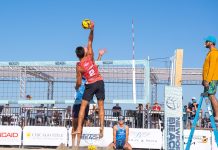It’s a pleasure to help a friend with a boat.
There are some informal, unwritten rules with regards to boaters and helping each other. It is customary to help a fellow boater, known or unknown, to leave the dock and return to the dock. Unless the captain or helmsman waves us off, we always help each other, no matter the size of the boat, to berth and de-berth. All boaters can tell a fellow boater by this boating etiquette, among other generous behaviors.
Of course, there is national and international maritime law mandating that when comprehending a boater having any distress, aid will be rendered without fail.
But boaters will go out of their way to help any other boater, regardless, and if you berth in a marina, your neighbors are automatically treated as close family members. This behavior has been shown to me as well, when the need arose, countless times.
So when a boating friend asked for my help recently, I was eager to oblige. Not only is Rod a boater, but he is well known on the waterfront for being an ace on refrigeration and air conditioning on yachts. Occasionally I have worked with him for wages as a helper on 90-foot to 160-foot yachts. I mentioned “work,” but for a boater it’s very amusing and interesting to be one of the few who see the inside of a $45 million yacht that is less than a year old.
As I did, Rod grew up boating in our area and Catalina. His dad for many years owned a K-40 wooden sailboat that was raced and cruised in the ’50s, ’60s and ’70s. K-40s, K-50s and K-42s were all made in San Diego. There are a few K-40s still in Newport but, as most people know, wooden boats are more expensive to maintain, so fiberglass boats are much more in demand.
For many years Rod wasn’t boating, until he was given a Cal-20 sailboat. Bill Lapworth designed all the Cal sailboats, and I think the Cal-45 was the largest. I worked on Bill Lapworth’s dock at his bayfront Bayshore home. In the 1960s and 1970s Orange County produced more fiberglass yachts, mostly sailboats, than anywhere in the world.
Here I am mentioning again the notoriety of our area in global terms.
The Cal-20s are still raced all over the country, and the Long Beach Yacht Club has a very large fleet. The Cal-20 nationals were held in Long Beach just a few weeks ago.
The Cal-20’s condition and size were a little limited for Rod. About one month ago he came across a 25-foot O’Day sloop that can sleep five and has a head and galley. O’Day’s were made on the East Coast and sold locally at Ardell Yachts. It’s amazing how 5 more feet of length and 2 feet more headroom can seem much roomier.
The new boat meant Rod could take his wife and son to Catalina for a week’s vacation. As this was the first voyage, he asked me to crew with him while the family would take the Catalina Flyer from the Pavilion to Avalon. Everyone would return on the new boat. This was good thinking on Rod’s part, and I was only too happy to help.
Last Monday morning the alarm woke me at 2 a.m. for a 3:30 a.m. departure. His K-40 usually took six hours to power across the channel. The daytime prevailing wind doesn’t allow sailing over to the island but allows a fantastic sail back to Newport Harbor. Not only is the course back an almost downwind sail, it also allows for the spinnaker to be flown. (The spinnaker is that forward half-balloon sail in the front of the boat, usually quite colorful, and allows the vessel to sail at its peak speed.)
We cleared the jetty at 4:05 a.m. and approached the Avalon breakwater at 9:10 a.m., ahead of schedule. As dawn broke we could continue to see Saddleback Peak all the way over and could make out the red light on the peak of Catalina around 4:30 a.m. Seven to eight miles from the island we could see San Clemente Island. When we went to meet his family on the catamaran we could still see Saddleback Peak which is around 40 miles. What a view!
Throughout the weekend I had been receiving calls from a client on a 50-foot Hatteras sportfisher. They were having electrical problems and had spent three days diving and fishing out of Cherry Cove, near the opposite end of Catalina. They use huge batteries to power their upgraded anchor winch and the davit that launches and retrieves an 11-foot inflatable with a 50 horsepower outboard motor. The inflatable can achieve a 50 mph speed and is used for high-speed towing of toys and water skiers, and as a dive tender, fishing boat and shore boat. It can safely hold up to five adults. The radar, auto-pilot, engine gauges and independent diesel generator are the same voltage. The two main engines are powered by separate and different voltage batteries.
It’s not unusual for most boats on a voyage to have a mechanical problem or two.
It so happens that the best marine electrician I have ever known is that same friend who has an air conditioning and refrigeration business. As we are friends, he handles all electrical issues on the yachts I manage. When I received another call from the Hatteras and they said they still had problems but were returning to Newport, I asked if they wanted to swing by Avalon first so maybe we could fix their problem. They were more than happy to do so.
Rod determined the battery charger was the problem and would need to be removed and repaired in Newport, which has since been done. As of this writing, the vessel is back at Catalina and an additional trip is planned next weekend. Iisn’t life grand?
On Friday, Aug. 31, I saw the OC red fire boat go by at full speed, about 30 mph, along Mariners Mile. I’ll write about this next week and why another high-speed government vessel caused all of us to pay for a new marina at the Balboa Bay Club. If we paid for the marina, I always felt we should be able to keep our boat there for free! (This is my sense of humor talking.) And by the way, the Bay Club is on city property. (Haha!)
On that same day I saw Dennis Holland, formerly in Hoag Hospital, looking at the famous wood yawl Chubasco. I guess he can now continue to dismantle the yacht in his driveway. I’ll include my past family experience and thoughts about Dennis, and a local pirate ship that’s also relevant to my family and him, in the next column.
Sea Ya,
Skipper Steve




